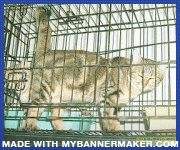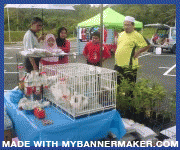Puasa ertinya menahan diri daripada makan dan minum serta segala perbuatan yang boleh membatalkan puasa, mulai dari terbit fajar sehinggalah terbenam matahari. Umat Islam juga dikehendaki menahan diri daripada menipu, mengeluarkan kata-kata buruk atau sia-sia, serta bertengkar atau bergaduh. Ini kerana puasa merupakan medan latihan memupuk kesabaran, kejujuran serta bertolak ansur sesama sendiri. Secara tidak langsung amalan puasa akan menyuburkan sikap murni di dalam diri pelakunya. Adalah menjadi harapan kita agar kesemua nilai yang baik ini akan terus dipraktikkan ke bulan-bulan berikutnya.
Dalil
Firman Allah S.W.T:
| “ | “ Wahai orang-orang yang beriman, telah diwajibkan ke atas kamu berpuasa sebagaimana telah diwajibkan ke atas umat-umat yang sebelum kamu, semoga kamu menjadi orang-orang yang bertaqwa. “ - (Surah Al-Baqarah: 183) | ” |
Hadis Rasulullah s.a.w: Ditegaskan oleh Rasulullah s.a.w melalui sabdanya yang diriwayatkan oleh Ahmad, An- Nasa'i dan Al Baihaqi dari Abu Hurairah, yang bermaksud:
| “ | " Sesungguhnya telah datang kepada kamu bulan Ramadhan bulan yang penuh berkat. Allah telah fardhukan ke atas kamu berpuasa padanya. Sepanjang bulan Ramadhan itu dibuka segala pintu Syurga dan ditutup segala pintu neraka serta dibelenggu segala syaitan......." | ” |
Niat puasa Ramadhan
Tidak wajib dan tidak juga sunat berniat dalam bahasa Arab, memadai dalam bahasa Melayu atau apa-apa bahasa yang kita fahami. Tetapi baik dan berpahala jika diamalkan dalam bahasa Arab dengan niat kita cinta kepada bahasa Arab sebagai bahasa Nabi Muhammad s.a.w. dan bahasa Al-Quran.
Lafaz niat
Lafaz setiap malam. Niat ringkas:
نَوَيْتُ صَوْمَ رَمَضَانَ لِلَّهِ تَعَالَى
Niatnya: Sahaja aku puasa Ramadhan kerana Allah Taala.
Lafaz lengkap:
نَوَيْتُ صَوْمَ غَدٍ أَنْ أَدَاءِ فَرْضِ رَمَضَانَ هَذِهِ السَّنَةِ لِلَّهِ تَعَالَى
Niatnya: Sahaja aku puasa esok hari pada bulan Ramadhan tahun ini kerana Allah Taala.
- Sebenarnya bangun untuk bersahur itu sudah dikira berniat untuk berpuasa.
Lafaz niat puasa Ramadhan sepenuhnya untuk sebulan:
Lafaznya:
نَوَيْتُ صَوْمَ شَهْرِ رَمَضَانَ كِلِّهِ لِلَّهِ تَعَالَى
Niatnya: Sahaja aku berpuasa sebulan Ramadhan tahun ini kerana Allah Taala.
- Digalakkan berniat puasa untuk sebulan dengan sekali niat pada malam pertama Ramadhan bagi mengelakkan daripada tidak sah puasa kerana terlupa berniat pada malamnya, kita mengikut Imam Malik yang membolehkan berniat untuk sebulan sekali gus.
- Namun begitu, jika puasa Ramadhan kita terputus oleh sesuatu sebab, seperti haidh, sakit atau lain-lain, maka niat puasa sebulan itu tidak lagi memadai untuk hari-hari puasa yang seterusnya, tetapi, hendaklah diperbaharui niat apabila tidak ada lagi perkara yang menghalang daripada puasa berturut-turut tersebut. Maksudnya, dengan memperbaharui niat sekali lagi bagi semua hari-hari puasa Ramadhan yang berbaki, iaitu niatnya:
- “Sahaja aku berpuasa esok dan sehingga akhir Ramadhan ini kerana Allah Ta’ala”.
Waktu berniat
Waktu berniat bermula daripada terbenam matahari, yakni masuk waktu sembahyang fardhu Maghrib hinggalah sebelum terbit fajar shadiq (waktu Subuh). Oleh itu, bolehlah dilakukan niat puasa pada mana-mana bahagian daripada waktu tersebut, walaupun semasa berbuka.
Hukum puasa
Puasa Wajib
- Puasa di bulan Ramadhan merupakan salah satu daripada Rukun Islam. Syariat puasa Ramadhan difardhukan kepada umat Muhammad s.a.w. pada tahun ke-2 Hijrah. Makanya, wajiblah ia dilakukan oleh semua orang Islam.
- Puasa Kifarah.
- Puasa Nazar.
Puasa Sunat
Hari-hari berikut disunatkan berpuasa bagi umat Islam:
- Puasa enam hari pada bulan Syawal
- Puasa pada Hari Arafah pada 9 Zulhijjah
- Puasa pada Hari Asyura pada 10 Muharam
- Puasa pada Hari Isnin dan Khamis
Puasa Haram
- Puasa pada Hari Syak pada hari 30 Syaaban
- Puasa pada Hari Raya Aidil Fitri pada 1 Syawal
- Puasa pada Hari Raya Aidil Adha pada 10 Zulhijjah
- Puasa pada Hari Tasyrik pada 11, 12, 13 Zulhijjah
- Puasa perempuan haid & Nifas
- Puasa sunat seorang perempuan tanpa izin suaminya
- Puasa bagi orang yang bimbang berlakunya mudharat ke atas dirinya kerana berpuasa
- Puasa untuk orang lain dan yang ghaib serta tidak diniatkan kepada Allah SWT
Syarat wajib puasa
Orang-orang Islam yang memenuhi syarat-syarat di bawah ini diwajibkan berpuasa pada bulan Ramadhan:
- Berakal/waras
- Baligh (cukup umur)
- Mampu/tidak uzur.
Syarat sah puasa
Manakala syarat puasa itu diterima di dalam Islam (sah) ialah:
- Orang Islam
- Berakal - tidak sah jika gila atau kanak2 belum mumayyiz
- Suci daripada haid dan nifas
- Dalam waktu yang dibolehkan berpuasa, iaitu bukan dalam tempoh haram puasa.
Rukun puasa
Rukun puasa ada dua, iaitu:
- Berniat pada malam harinya
- Menahan diri dari perkara-perkara yang membatalkan puasa mulai terbit fajar hingga terbenam matahari.
Sunat puasa
Perkara-perkara berikut disunatkan ketika berpuasa:
- Makan sahur serta melambatkannya
- Menyegerakan berbuka dan sunat berbuka dengan buah kurma atau benda-benda yang manis atau air
- Menjamu orang-orang berbuka puasa
- Memperbanyakkan ibadah dan berbuat kebaikan.
Perkara yang membatalkan puasa
Manakala perkara-perkara berikut akan membatalkan puasa jika terjadi:
- Makan dan minum dengan sengaja walaupun pada nilaian dan kadaran yang sedikit pun,seperti memakan saki baki makanan kecil yang terlekat pada celah gigi dan lain-lain lagi.
- Muntah dengan sengaja
- Bersetubuh atau keluar air mani dengan sengaja
- Keluar darah haid atau nifas
- Gila (hilang akal)
- Pitam(termasuk pengsan) atau mabuk sepanjang hari.
- Merokok disiang hari.(Termasuk menghisap ganja atau dadah)
- Murtad (keluar dari Islam)
- Memasukkan sesuatu ke dalam rongga terbuka seperti menyembur pewangi atau menyegar mulut dan sebagainya.Larangan ini tidak termasuk memasukkan air atau udara kedalam rongga terbuka kerana ingin berwuduk atau melegakan kesakitan dan ketidakselesaan pada rongga(dengan syarat air tersebut tidak diminum atau ditelan dengan sengaja).
Mereka yang diizinkan berbuka
Terdapat kelonggaran (harus) kepada golongan yang berikut untuk berbuka:
- Orang yang sakit .
- Orang yang berkerja buruh.
- Orang yang dalam musafir (perjalanan).
- Orang tua yang sudah lemah.
- Orang yang hamil dan ibu yang menyusukan anak.
Doa buka puasa
اللهم لك صمت وبك امنت وعلى رزقك أفطرت
Ya Allah, Aku telah berpuasa untuk Kau dan pada Kaulah aku mempercayai dan aku membuka puasa dengan apa yang Kau berikan
Tingkatan Puasa
Imam Abu Hamid al-Ghazali dalam bukunya Ihya al-'Ulumuddin telah membahagikan puasa itu kepada 3 tingkatan:
- Puasanya orang awam (shaum al-'umum): menahan diri dari perkara-perkara yang membatalkan puasa seperti makan dan minum.
- Puasanya orang khusus (shaum al-khusus): turut berpuasa dari panca indera dan seluruh badan dari segala bentuk dosa.
- Puasanya orang istimewa, super khusus (shaum al-khawasi al-khawas): turut berpuasa 'hati nurani', iaitu tidak memikirkan sangat soal keduniaan
Pembahagian di atas memberikan umat Islam ruang untuk berfikir dan menelaah tingkat manakah mereka berada.
Kerugian meninggalkan puasa Ramadhan
Pahala puasa Ramadhan amat besar. Orang yang meninggalkan puasa dengan sengaja, bukan saja telah melakukan satu dosa besar, bahkan dia mengalami satu kerugian yang amat besar, satu hari puasa yang ditinggalkan tersebut tidak boleh ditebus dengan apa jua cara, tidak boleh ditukar ganti, sekalipun orang yang meninggalkannya berpuasa seumur hidupnya. Ini jelas sebagaimana sabda Nabi Muhammad Shallallahu ‘alaihi wasallam: Maksudnya: “Sesiapa berbuka satu hari pada bulan Ramadhan tanpa ada rukhshah (uzur syarak) dan tidak juga kerana sakit, dia tidak akan dapat menggantikan puasa yang ditinggalkannya itu, sekalipun dia berpuasa seumur hidup.” (Hadis riwayat Tirmidzi, Abu Daud, Nasa’i, Ibnu Majah dan Ibnu Khuzaimah).

 Rabbits can act as if they're hardy creatures, but they are, in fact, extremely delicate-from their skin to their spines to their external systems. Care must be taken to maintain their good health. The following basics are necessary to know in order to groom rabbits safely and to help keep them healthy. For information specifically geared towards the caring for long-haired rabbits, see the reprint of the House Rabbit Journal article, "The Well-Groomed Rabbit."
Rabbits can act as if they're hardy creatures, but they are, in fact, extremely delicate-from their skin to their spines to their external systems. Care must be taken to maintain their good health. The following basics are necessary to know in order to groom rabbits safely and to help keep them healthy. For information specifically geared towards the caring for long-haired rabbits, see the reprint of the House Rabbit Journal article, "The Well-Groomed Rabbit."































